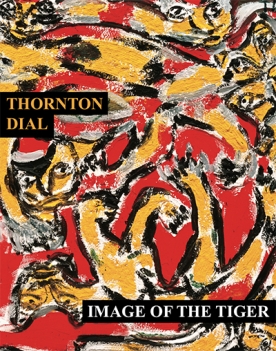Thornton Dial: Image of the Tiger
Description
Thornton Dial has been "making things . . . just for myself" for much of his life. In 1987 fellow Alabama artist Lonnie Holley heard about Dial's fantastic objects and went to visit him. Holley came away with an intricate fishing lure, which he showed to Atlanta collector William Arnett and his son Paul, who became friends and ardent supporters of Dial. Since then, Dial's work has continued to develop and to attract notice within the art world. Now, with Thornton Dial Image of the Tiger, the first major monograph on his art, he moves to the forefront of artists expressing alternatives to Western art-historical conventions.
Using a variety of materials—scrap metal, rope, carpeting, canvas, wood, and paint—held together with industrial sealing compound, Dial creates powerful, richly textured narrative assemblages. His primary symbol is the tiger, with which he represents the African-American male, notably Dial himself, as he encounters life. Along the way, the artist comments on a broad range of social issues, which are reflected in many of his titles, such as Everybody Got a Right to the Tree of Life, Heading for the Higher-Paying Jobs, Men on Alert: All Eyes on Iraq, and AIDS: Freedom Ain't Free.
These assemblages, as well as watercolors and drawings, are presented in 128 luminous reproductions—122 in color, most made with a special photographic lighting system designed to bring out textural detail—along with commentary that takes three forms. First, art critic Thomas McEvilley, known widely for his groundbreaking writings on post-Modernism in the arts, analyzes Dial's work as a watershed in the slow dissolution of traditional "high-art" restrictions in the contemporary art world. Second, the noted poet, playwright, and essayist Amiri Baraka (LeRoi Jones) looks at the phenomenon of the African-American self-taught artist and the cultural tradition from which Dial emerges. He also provides a vivid, lyrical interpretation of the artist's imagery. Third, in a series of extended captions, Paul Arnett and William Arnett present detailed iconographic readings derived from Dial's remarks about his works.
